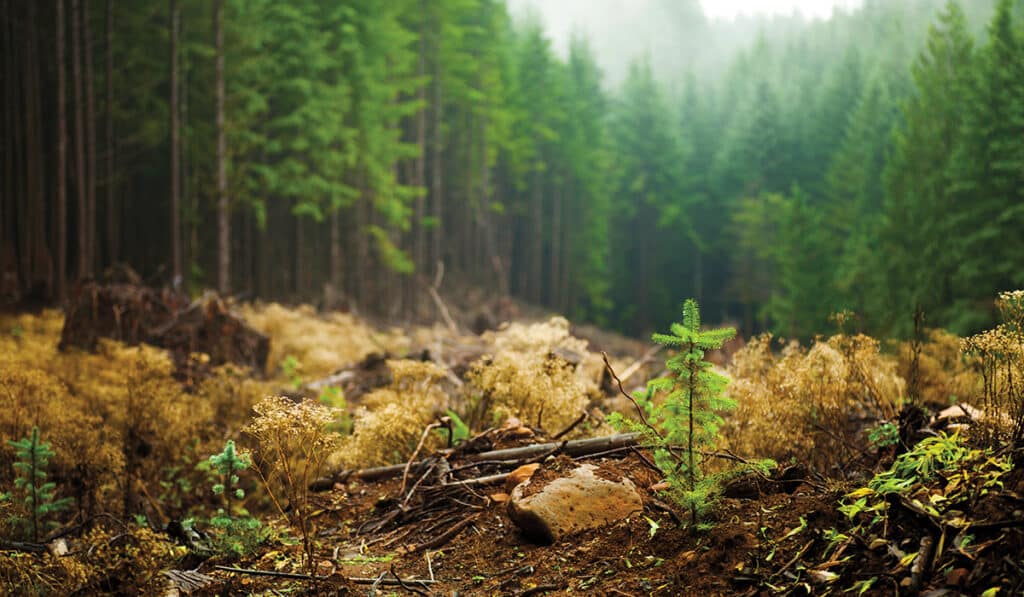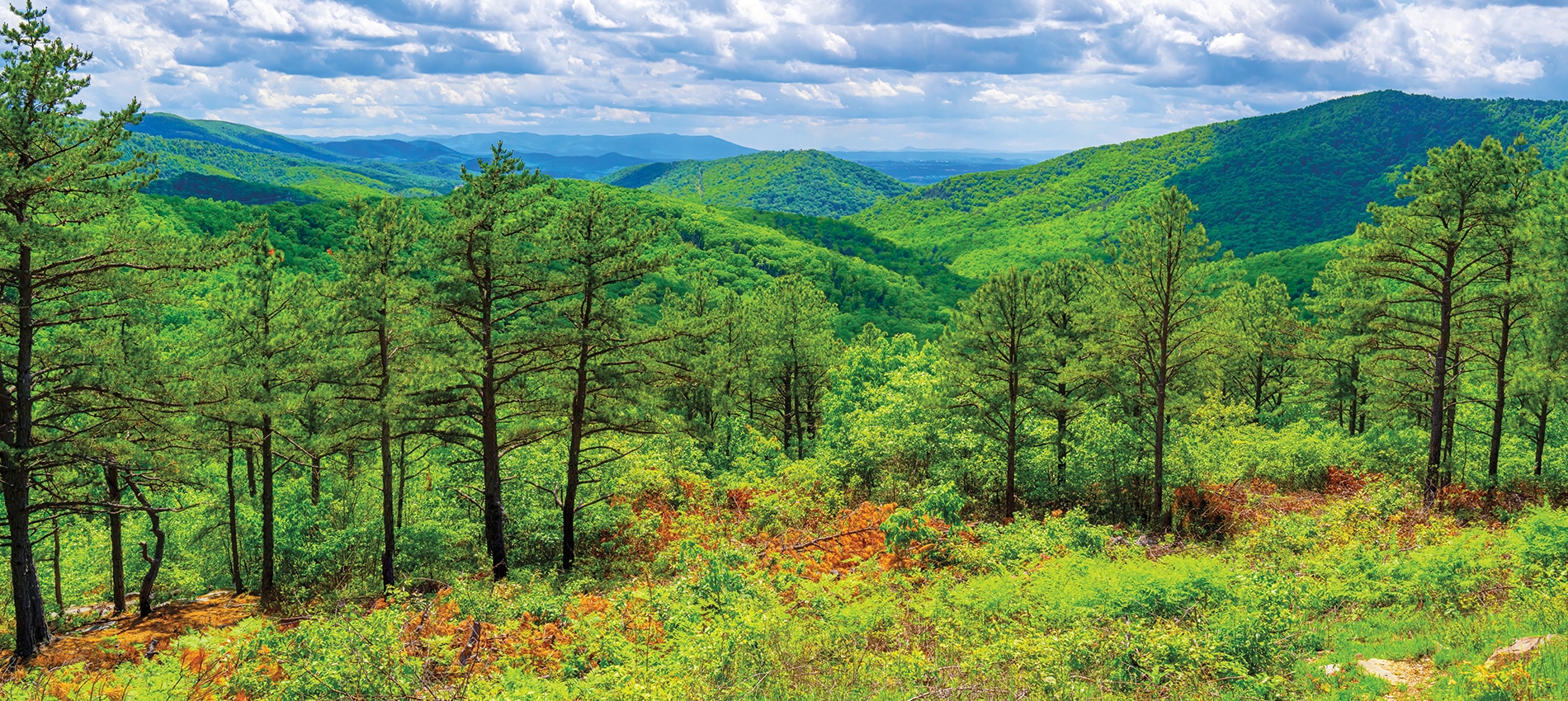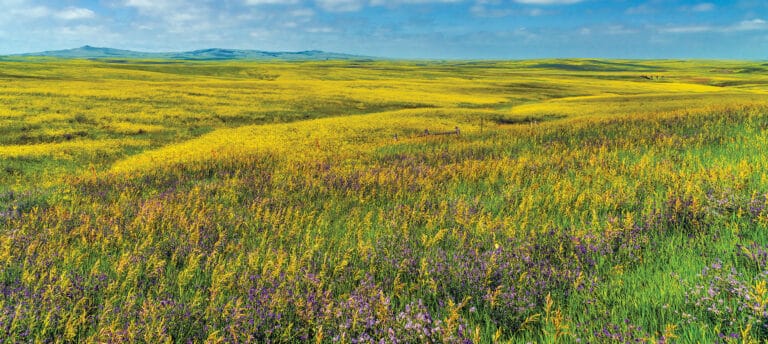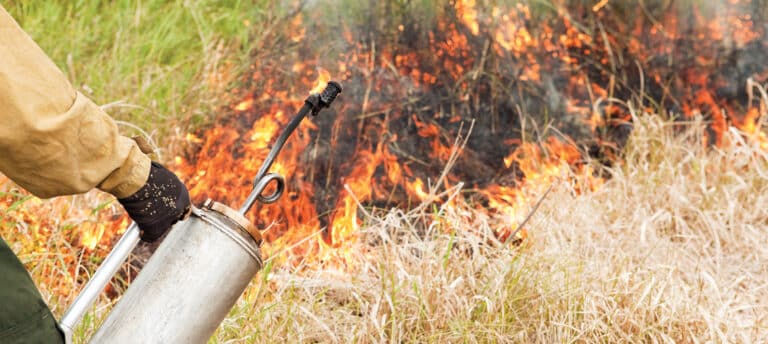
This article is featured in the Summer 2025 issue of LAND magazine. Click here to find out more.
Over the past 10 to 15 years, private forest owners have broadened the goals for their land. While timber production is still important, many have begun prioritizing multi-generational recreation and ecological health, prompting them to rethink their management strategies.
Traditionally in the Southeast, which contains 40 percent of the nation’s timberlands or forests capable of producing industrial wood, landowners focused on establishing productive pine plantations. These monocultures were harvested and re-planted on a 30-year cycle.
Today, as landowners embrace different goals, they often undertake forest restoration to transition their intensively managed timberland back to a native forest. Forest restoration is the process of rebuilding and maintaining forests to help them recover from degradation, ultimately restoring their ecological function and benefits. Restoration aims to create healthy, resilient forests that provide various ecosystem services, including clean air and water, carbon sequestration and wildlife habitat.
I sat down with Brody Capps, operations manager of Conservation Equity Partners and director of field operations for Conservation Equity Management, two companies that specialize in restoring and maximizing ecological productivity while realizing economic benefits from land, and Nick Romano, director of operations for Habitat Select Nursery, a nursery that specializes in collecting native seeds and propagating trees adapted to those specific properties or ecoregions, to discuss forest restoration. You can listen to our entire conversation on Episode 24 of the Land.com Podcast where we take a deep dive into “Going Native.”
1. What are the benefits of native trees in the landscape?
NR: In urban settings, ornamentals or non-natives have this reputation for being superior and more beautiful, but we’re seeing a paradigm shift as the weather and climate become more unpredictable and extreme.
Natives are hardier and it’s possible to put together native landscape packages that are just as beautiful, productive and abundant as introduced species—and these natives will actually support the local ecosystem. And as importantly, you’re not introducing something like a Chinese tallow tree that spreads like wildfire and displaces native species.
BC: What I’ve observed about non-natives is that they either have a relatively short lifespan and have to be replaced or they take hold, have a long lifespan and take over. The natives we grow have evolved here alongside all the other plants, wildlife and insects that are native to the ecoregions where we work. Natives are adapted to the climate and the soil and contribute to a well-functioning ecosystem instead of disrupting it.
NR: For the record, planting natives is just the first step in restoring timberland. After you get the right plants in the ground, you have to manage your land to achieve your goals.
2. Describe the process of producing native trees from seed collection to planting. It strikes me as a long commitment.
NR: It is a commitment, but it happens a lot quicker than you might expect. We collect seeds in the fall for 99 percent of the tree species we grow. Most of our natives have a period of seed dormancy. In nature, the seed will fall and rest on the cool, moist soil through the winter in a period known as stratification. We mimic that stratification period in the nursery by treating the seed and then storing it in a cooler where we maintain a cool, moist environment to break the dormancy.
Then, in mid-March, we start planting our seedling trays and the seeds will germinate in those trays. In about two months, we’ll start selling seedlings to our nursery clients because the seedlings will be ready to transplant into larger containers.
For our reforestation projects, we hold the seedlings longer because the preferred planting window is fall and winter. The seedlings need to be dormant, and the soil needs to be cool and moist. In those instances, it takes about 10 months to go from a seed to a larger seedling that’s ready to go into the field.
BC: We also set aside a certain number of seedlings that we want to sell as larger trees. We transplant the seedlings into three-gallon pots, which gives them a lot more room to grow, and they just “blow up.” Over time, through several years of trial-and-error, we’ve identified just the right mix of fertilizer, water and nursery conditions that allow us to grow a six-foot tree in a year.
3. What are the major differences between restoring rangeland and restoring forest land?
BC: We could talk about this question for hours, but I’ll tackle it from a 30,000-foot perspective. While I can’t say that forest land has more diversity than rangelands because that’s not always the case, I can say that in forest land restoration you’re dealing with more vertical diversity. In forests, the plants are 60 feet to 80 feet tall instead of three feet to six feet tall.
And what goes with that is that in forests you are manipulating the amount of sunlight that reaches the forest floor. You can do that by prescribed burning, removing some trees or planting some trees.
The native seed bank has been laying there dormant for maybe a hundred years or more, but the soil needs to be disturbed. It can be done with prescribed burning, logging or other methods. The combination of light and disturbance, depending on the condition of the seed, can jumpstart the reintroduction of native plants without physically planting them.
NR: The big difference between forest and rangeland restoration is the need to alter the forest canopy so that the sunlight can touch the ground versus the need to alter the composition of the plant species growing on the rangeland. Even though what you’re trying to do is different, the end results can be achieved using the same methods such as prescribed burning, soil disturbance and the like.
After you’ve achieved your initial restoration, the next step is the same in either environment. You must actively manage the landscape because nature changes. If you want to achieve specific goals on your land, it is not a “one-and-done” process. It’s an ongoing process of monitoring and manipulation.
And don’t get in a hurry. In the case of forestlands, it could take three to five years to start seeing changes even with some fairly intensive management.
BC: While we’re talking about management, there is this misconception, especially in forest management, that you always have to have a lot of money and big equipment to manage land. To be clear, that’s not always the case. The first step is gaining knowledge and investing time in education.
Invest time in identifying the best science-based information and landowner resources and then learn as much as you can. Read, talk to other landowners and conservation professionals who have done it, go to field days and get informed on how to do it.
In a lot of instances, you can use the available tools of conservation to achieve your management and along the way generate some revenue from your property that you can re-invest in your stewardship efforts.
Of course, there are situations, where it makes dollars and sense to hire someone with the proper equipment and expertise to get the job done efficiently and right the first time. That’s where services like ours come into play.
Forest restoration is the process of rebuilding and maintaining forests to help them recover from degradation, ultimately restoring their ecological function and benefits.
4. Here is a scenario for you. My family and I have just clearcut our 30-year-old pine plantation and now we’d like to restore 350 acres of our holdings to native habitat suitable for wildlife and recreation. What do we need to do?
BC: It depends on your goals. If you don’t care how long it takes to come back and what it looks like coming back, you can just invest some sweat equity and let nature take its course. You’ll have to be patient and content with the land looking sort of rough as it moves through the early successional stages. Potentially, you could run a prescribed fire there every two to three years to knock out the non-native species that didn’t evolve with fire and help the landscape return to its native state.
If you want to fast track the progress, you’d need to be more aggressive. In this case, you’ll need to prepare the site and replant the species that you want to re-populate it with from plants on your own property or a neighbor’s property.
In either scenario, you’ll be re-creating that native forest, but it’s a long game. It takes pines 15 to 20 years to look like anything substantial and hardwoods take 20 to 30 years to begin to define a landscape. And in the meantime, you’ll need to invest a lot of sweat equity in managing the landscape.
NR: To tweak your scenario a bit, if you have a 30-year pine plantation that you’re planning to harvest but you know in advance that you want to restore it to habitat, you could do a heavy thin on that acreage instead of a clearcut. Then, you’ll have some standing trees and the sunlight can hit the ground, allowing the native seed bank to respond.
Over time, you may have to begin prescribed burning to help knock back non-natives and promote the establishment of natives, but instead of starting from scratch you’ll have an open forested habitat that you can begin to enjoy.

5. What is your best advice for landowners wanting to restore their forestland?
BC: My best is advice is do your research before making any decision regarding your land. Whether it’s literature-based research or talking with people who manage forestlands every day, learn as much as possible from as many perspectives as possible.
It’s really easy to screw something up. Now, fortunately the Southeast is fairly forgiving, and nature will fix itself faster here than in some places like the Northwest, but it’s beneficial for the environment, for your satisfaction and your investment to try to get it right the first time.
NR: I would encourage landowners to be open-minded. There is a cookie-cutter mentality associated with forestry in the Southeast that forestry has to be conducted in a certain way that involves hiring a logger, a timber buyer, and everyone and everything will cost a lot of money.
So, think about what your goals are for your forest. Then talk with people who know how to help you achieve your goals and can help you identify how to proceed without breaking the bank or creating unnecessary problems. And have these conversations before you make a rash decision like clear-cutting your 100-year-old hardwood forest especially if recreation is your goal.
For more information, check out the following online resources:


